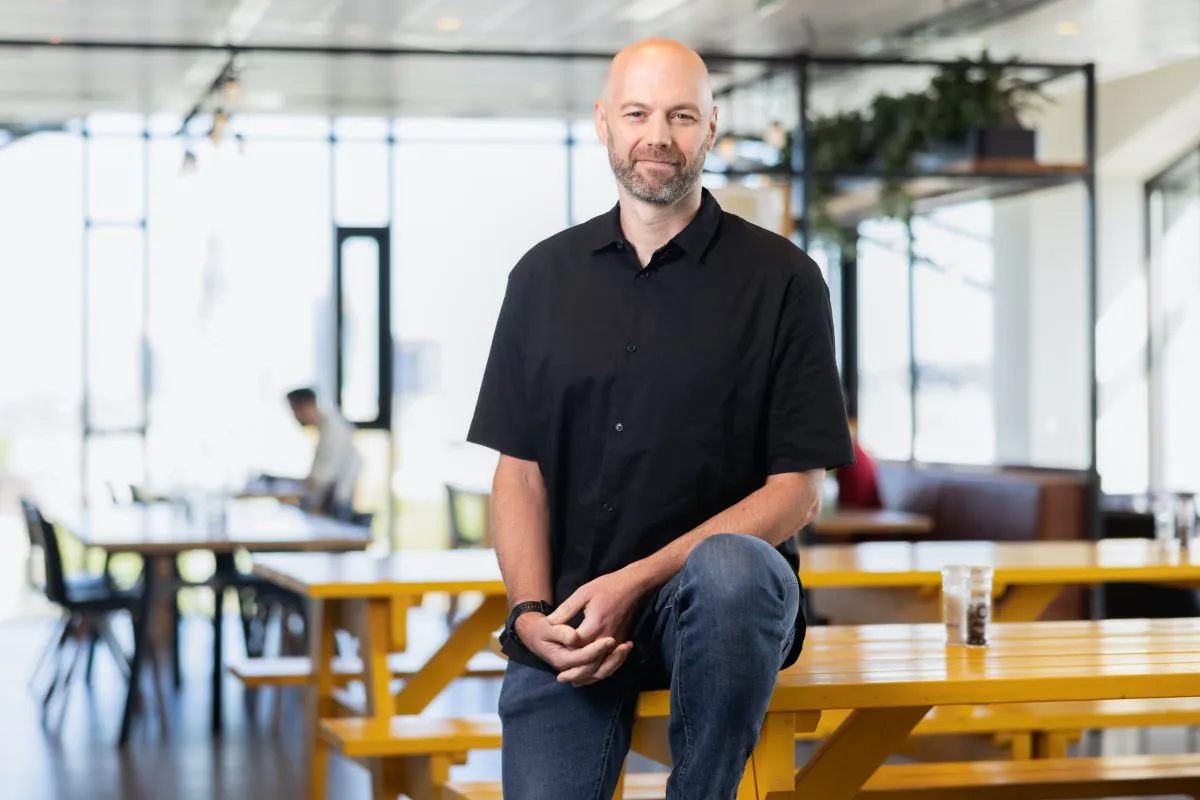Tour Operators Are Travel's Last Big Sector Ready for Digital Transformation

Skift Take
Peering in from the outside, it can appear that the multi-day tour sector is lagging in digital transformation when compared to almost every other sector of travel. We don't see the layers of digital infrastructure and we haven't seen the money that can flow with them. In airlines, hotels and even day tours and attractions, we've seen huge supportive industries pop up like res-tech, niche specific online travel agencies and Meta players.
In the multi day-sector, not so much. I set out to ask some of the leaders and emerging companies in the sector if they thought this perception was correct and if the factors the sector specifically faces make adoption, transformation and even disruption more difficult.
I was a little surprised to find agreement.
"I think that is a fair statement. We are tour operators, not technology companies, and when you look at the period pre-Covid, we (were) on a nice journey with good growth anyway," said Intrepid Travel CEO James Thornton.
Greg Cormier, the vice president for digital and e-commerce at G Adventures also agreed. "Larger operators have unique circumstances related to their respective technologies, and actual digital transformation is hard and takes time," he said.
"Operators with proprietary systems have an even more difficult task in evaluating the effort required versus the actual impact of the proposed transformations."
There are a few common threads in this space. Companies almost always form close to their source market. After establishing a foothold in their home market, a few have managed to expand globally to capture customers in other high potential markets.
But for most of them, this is a journey lasting decades. There are few instances of destination management companies or other travel companies capturing significant market share in their region of expertise via their brands and then expanding into a new region. Mexico-based Bamba Travel is one exception, having expanded globally with its unique hop-on hop-off model.
Assembling Groups of Strangers
Multi-day tours are generally small groups of strangers. "Small" can be anything from 10 to 25 participants depending on the company, and those groups are then formed around pre-set itineraries and departure dates.
Filling those departures sufficiently is the name of the game with the bigger companies having dedicated commercial departments operating similar to how a revenue manager might work in the hotel industry. Companies can only adopt price structures when they form groups, which enables them to see if the economics work. When those economics do work, the margins are good which, combined with the basket sizes in the thousands of dollars per customer, make for some sizable business.
Outside of establishing itineraries and date structures for tours, it has proven extremely difficult to form groups of people unfamiliar with each other, even in the era of social media. Getting a consensus on what exactly is in and out of a specific itinerary and what people's expectations of those experiences are definitely has some challenges. There are perhaps some signs of this now beginning to shift with social sensations like The Travel Squad emerging and beginning to organize trips for their communities. However, there have been other attempts in the past, with GlobeTrooper and WAYN getting acquisition traction but never finding a way to make their models operationally and profitably.
This seems like the most fervent area of current disruption, as it becomes easier for people to meet each other virtually and then do things together in real life. TravAmigos, a United Kingdom-based startup, is working to connect its customers online during the booking phase. That provides the benefit of knowing who is going and not just where and when the tour is. If you haven't been to many places yet, then who you travel with can be the selling point.
TravAmigos CEO Mark Duckmanton's background is in tech, not travel, and he is going after "the 85 percent who don't currently travel in organized groups" by providing them with the basic guard rails of a trip — accommodation along a route and the transfers between those places. The app then suggests options for activities via a feed from Viator. Consumers also can choose to establish, publicly or privately, same-sex or coed groups. Everything happens in TravAmigos' app, from choosing trips to making payments triggered by facial recognition and two-factor authentication. The company sold 103 spots on trips in its first month after launching in April this year.
"There is no guide getting you out of bed to go and do anything," Duckmanton said. "If you want to party all night and sleep all day, that's up to you."
Bringing Companies Up to Speed With Modern Technology
Murray Decker from TourAmigo, a business-to-business company that both helps multi-day tour operators get online for direct business and gives access to application programming interface connections facilitating distribution transactions, believes it has been both "a desirability and an inability question" regarding the transformation of mid-sized companies.
"There are still many multi-million dollar businesses operating off blackboards," Decker said, adding that only 15 of the largest companies have their own APIs. Even at the distributor end, connecting each of them takes months and requires ongoing maintenance.
The distributors need to factor in their return on investment. Many of those API-enabled companies, even the big ones, now connect their own APIs into TourAmigo, which then rolls them up into one feed for distributors like Kayak.
"We’ve seen a real difference through Covid on the desirability front as many businesses started contacting us rather than us relying on outbound sales," Murray said. "The penny has dropped."
Most of the sizable businesses in this area are multi-distribution organizations that grew up in the pre- Internet age, when the support from bricks and mortar travel agents was essential to growth. As this was the core way to capture market share, the systems built were done to facilitate these relationships. The tech here was logging into each other's intranets to check availability and make updates. We've only seen APIs come online in the past couple of years. There are helpers in this area such as TourAmigo, but there aren't dozens of them competing in a hot market. However, Cormier believes more will come.
Growing the Tour Operator Market
Travis Pittman, the CEO of online travel agency TourRadar, see his company playing a major role in the shift. "While we are the disruptors of legacy technology, what we really are is an enabler for the ecosystem."
Both Intrepid's Thornton and G Adventures' Cormier seemed to agree. Thornton said TourRadar had "gone about it in a nice way" while Cormier said "TourRadar has done a good job" when it came to tracking down and structuring available data and feeds to help grow the market.
Pittman estimates the market of adventure group tours is around $200 billion globally. He also believes the market itself is still misunderstood by consumers who view group tours as a large party being led by a guide holding a flag or umbrella. That's the antithesis of the experience most small group tour operators create.
"What we do complements the education of the market and grows the market," Pittman said.
TourRadar has recently switched its focus from the supply side to the demand side by providing connections and white labels for businesses like travel retailer Flight Centre's new HELIO system. TourRadar's other areas of focus includes helping smaller multi-day operators get online and sort out their payment issues with customers in far-off source markets. Pittman sees a Shopify or Etsy style model for operators based on the ground all over the world, which will give them equality through social proof elements like reviews on top of TourRadar's own vetting processes.
TourRadar has managed to raise $66.5 million and become the dominant player among online travel agencies. "We've had more outreach surrounding investment over the past three weeks than we've had in the past three years," Pittman said. "I am also seeing more (support services) businesses pop up in the sector than ever before. There is definitely something happening."
However, outside of TourRadar, we don't hear about a lot of money flowing into this sector which keeps it somewhat hidden. Although Cormier suggests Certares, KKR and Genairgy have placed large bets in the sector, he believes multi-day tour operators have kept financial details more confidential than in the fintech, retail, software industries, where he said valuations are shouted from the rooftops.
Most of the even larger companies are privately held and reported cash positive balance sheets prior to the pandemic. Regarding transactions, KKR bought Travelopia from TUI in 2017 for $404 million but not all brands in Travelopia could be considered multi-day group travel. Hornblower bought Journey Beyond for $426 million to add to its portfolio, which includes multi-day tour operators Outback Spirit and railway trip company The Ghan.
In addition, Intrepid Travel and G Adventures both have received external investment although the amounts, valuations and equity splits are not publicly known aside from the original founders maintaining majority stake in both instances.
Opportunities for Innovations
The plan and book phase seems to be high on the agenda regarding making an immediate digital transformation, which Thornton believes has helped a created a huge demand for tech workers in every sector.
"At this point, digital transformation is as much about survival as it is about growth and innovation," Thornton said. "Customers' expectations are around service being delivered in minutes, not days and eventually instantly."
Thornton sees this as an area of opportunity for third parties to come up with new innovations. G Adventures' Cormier agrees.
"From a technical perspective, some transformation comes down to 'buy vs build','' Cormier said. "We've implemented Stripe (for payments), Algolia (for onsite search), Dynamic Yield (for recommendations) and are working with Contentful (for content management system)."
"These companies are best of breed in their respective fields. They're investing heavily in their areas of expertise and that allows us to focus our efforts on innovation, and on areas where there isn't yet a composable option."
On the customer side of the experience phase, many parties just form their own WhatsApp group to communicate throughout the tour experience, including with the tour leader. Prior to that, people just left notes under doors or on hotel message boards. In the dream and share phases of travel, there have been some examples of third parties creating some great solutions. Stackla, until its Facebook ban, was one example, being effectively used by companies like Contiki to enable its customers to create user generated content for the brand to share in return for on-tour rewards. This UGC then fuels the dream phase.
While companies like Stackla cut their teeth in this sector, they've also been used in other areas and indeed outside of travel altogether by the likes of McDonalds. The best marketers are scanning all verticals and industries for new and captivating ideas for the dream phase. Their advantage is that the content of the actual product here is highly inspiring, allowing this sector to become standout case studies and therefore making this industry a good place for those marketing tech providers to start. The innovation role the sector plays is that of early adopters.
Tony Carne is an Australia-based serial entrepreneur/Intrapreneur and a lifelong veteran in the tour operator space. He currently an entrepreneur-in-residence at vc firm Antler.




